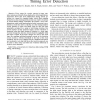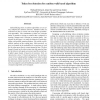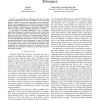87 search results - page 12 / 18 » Transient Fault Detection in State-Automata |
DFT
1997
IEEE
14 years 3 months ago
1997
IEEE
Abstract— Error control is a major concern in many computer systems, particularly those deployed in critical applications. Experience shows that most malfunctions during system o...
ISPDC
2008
IEEE
14 years 5 months ago
2008
IEEE
Self-stabilizing token circulation algorithms are not always adapted for dynamic networks. Random walks are well known to play a crucial role in the design of randomized algorithm...
CGO
2009
IEEE
14 years 5 months ago
2009
IEEE
—As semiconductor technology scales into the deep submicron regime the occurrence of transient or soft errors will increase. This will require new approaches to error detection. ...
ICDCSW
2005
IEEE
14 years 4 months ago
2005
IEEE
Although a self-stabilizing system that suffers from a transient fault is guaranteed to converge to a legitimate state after a finite number of steps, the convergence can be slow ...
ITC
2003
IEEE
14 years 4 months ago
2003
IEEE
Energy Consumption Ratio (ECR) test, a current-based test, has shown its ability to reduce the impact of process variations and detect hard-to-detect faults. The effectiveness of ...



